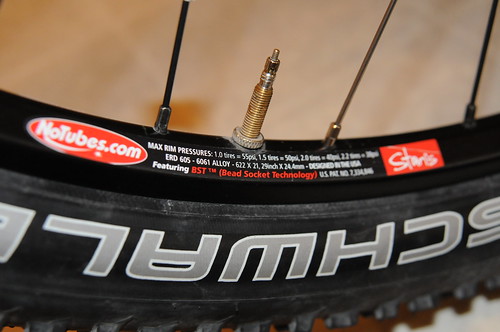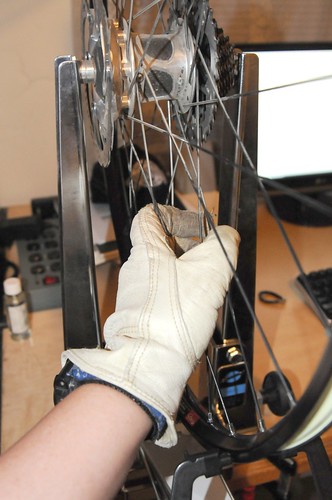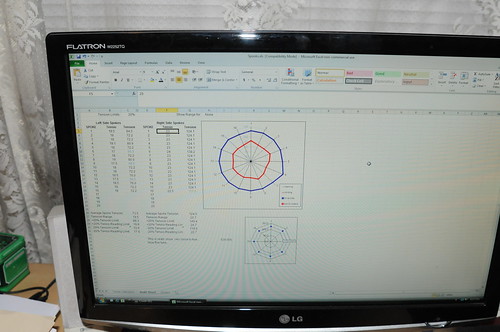I like bike wheels. I really am fascinated by them. They are so simple. Spokes with a simple thread. A rim. A hub. The technology's been around and mostly unchanged for well over a century. There is nothing mechanically complex aboot them. Yet at the same time... wheels can be complex to build. The wheel must be true. Not only side-to-side but it mustn't hop. And the tension in the spokes should be quite close as well. It's a finesse task. A wheel represents the ultimate balance between opposing tensions.

I built the HighBall wheel that nearly essploded on Saturday. Puzzling. I've never had a wheel do this. Many of the non-drive side spokes were worked loose. Nothing obvious. Suspected culprets: rider too heavy and bent rim, spoke windup, or uneven tension between spokes. The first step was to de-tension the wheel and make sure the rim wasn't bent. As best as I could tell, it wasn't. Thus, the retension began. Given my suspicions I stress releived the wheel often...
Because of the tight tolerance I was shooting for, this was a long build, taking nearly two hours! Yikes. All well. I remounted the tire, aired it up to seat the bead. Just by chance I plucked a spoke. Got a *thud* instead of a *ping*. Whaaat? Where did my tension go? I grabbed the tension gauge, and the spoke tension on the non-drive side was too low to even measure. Hmm... I've found the problem...
All wheels reduce spoke tension when air is added to the tires. Think of the tire and tube like a donut. As you inflate it, the hole closes, right? This force constricts around the rim reducing the pull on the spokes. For most rims, the difference is small. Crest rims are obviously some veeeery flexy rims. Good practice says spoke tension should be specified without tire inflation. That convention clearly doesn't apply for these rims. Building to the recommended 100kgf spoke tension... I ended up with less than 50kgf on the drive side with 30psi of air. No spoke is going to keep it's nipples tight at that tension. Expecially not a disc-braked rear wheel that wheel experieces cyclic torque in both directions.

With the tire inflated, I retensioned the spokes to the 100kgf recommendation. I don't think this is what Stan's NoTubes recommends, but it's the only way the wheel will survive. These rims have very little radial stiffness. I'm betting they don't make it through the spring season.
I checked the front wheel and found similar low spoke tensions. No problems with nipples loosening during ride, but the bracing angle offset isn't nearly as drastic as a rear wheel.
Vindicated in a sense. It wasn't my bigg butt, or a sloppy build technique that caused the wheel to fail. Checking spoke tensions post tire inflation will become part of my standard practice, whether I expect it to make a difference or not.



0 comments:
Post a Comment